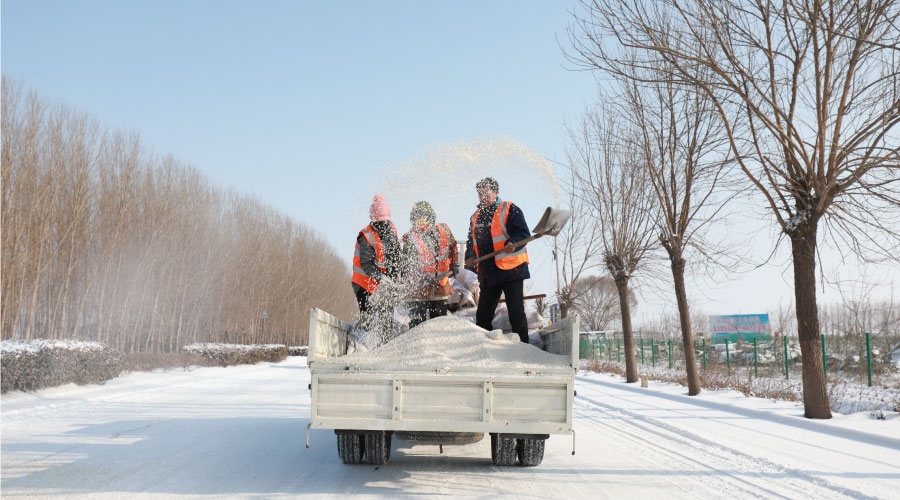When Pests Attack
Effective pest management requires that managers fully understand the challenge, as well as possible solutions
Many grounds managers face the difficult challenge of controlling pests in landscaped areas that feature numerous types of plants, shrubs and turf. At the same time, managers must protect the health of occupants and visitors to the site.
Unlike mowing — grass grows, you cut it — pest management is an evolving challenge. Throughout the seasons, various pests become problematic. If managers do not deal with pests properly, the intruders can cause severe economic and aesthetic damage. Managers can meet the challenge by understanding the pests in question and developing a comprehensive strategy to control them safely and effectively.
Regional Challenges
Pest problems vary widely. For example, the three most common pests in San Diego are the Argentine ant, aphids and feral honeybees, says Donald Bottger, certified grounds manager (CGM) and assistant facility manager at the San Diego Convention Center.
In Greenwich, Conn., Michael Mongon, CGM and property manager at Fairview Country Club, deals with bluegrass weevils, white grubs, and cutworms each year.
“The damage these insects cause can be devastating,” Mongon says. “Turf loss, soil erosion and aesthetics are all factors affected by turf damage. Then you have the expense of renovating these areas. On a golf course, turf loss usually adds up to lost revenue. Many of these factors hold true of all types of landscapes, no matter what the site use.”
In the Midwest, white grubs and Japanese beetles are among the most prevalent pests. But the emerald ash borer is very damaging to parts of Michigan, Indiana and Ohio. Deer also have become a major national problem.
“They were nearly extinct at the turn of the 20th century,” says John VanEtten, CGM, a landscape manager for an in-house company that maintains 32 commercial business properties in New York. “Today, they are almost unstoppable.”
An Integrated Approach
To deal with this array of pests, many managers have instituted an integrated pest management (IPM) program. Using IPM strategies is more environmentally conscious and offers enhanced protection and safety for grounds workers and visitors to a site. With IPM, the days of blanket applications of pesticides every two weeks to kill whatever comes around are gone.
“We use IPM exclusively at the center and have determined that the concept of integrating all avenues to control pests is much more effective at establishing comprehensive pest control,” Bottger says. “I have found the most challenging aspect of IPM is that there is a general lack of understanding of IPM.
“IPM does not mean a complete abandonment of pesticides but a comprehensive plan for determining the causes of an infestation, eliminating factors that can lead to infestations and using the least toxic method of control. The most challenging aspects of IPM are — once a pest problem is noticed — being able to identify the insect, choosing an insecticide that is environmentally friendly to knock down the pest, then being able to apply this insecticide safely and in a timely fashion.”
Adds VanEtten, “You must also determine a tolerance threshold in order to properly react to pest populations. The first step is to determine your threshold of tolerance, which will differ from site to site depending on the expectations of the end consumer. For some, any damage is intolerable. For others, chronic damage is tolerable.”
Chemical Considerations
When pesticides are called for, managers must take care to choose those that will eradicate or suppress the intended pest with little or no harm to the environment, other animals, insects and workers applying or using the area.
Using products with substantial residual impact will reduce the number applications and make the timing of application less critical. Also, choosing products that target specific pests is best for the environment, other beneficial insects and mammals. Mongon’s crew conducts daily scouting, particularly where damage occurred in the past. Department members also continually analyze the weather and track growing degree-days.
“The timing of an accurate application is very critical for the control of the damaging insects,” he says. “Accurate timing of applications is tricky because of the current unpredictable weather, the upcoming weather patterns and the soil temperatures. All will play a role in insect emergence time, population levels, and potential damage.”
Adds Bottger, “At our facility, Argentine ants are controlled with the use of bait with the active ingredient, Hydramethylnon. This bait has proven to be extremely effective in nest eradication at our site. Also, it is comforting to know that the bait has a low toxicity to non-target insects and that the toxicity to mammals is also very low.
“Aphids are controlled with a combination of high-pressure streams of water and low-toxicity, insecticidal soaps. We inspect the foliage regularly, and when an infestation starts, we attempt control methods immediately to ensure that the populations do not increase.” Keeping down ant populations also decreases the presence of aphids.
In eradicating honeybees, Bottger’s staff uses full protective suits.
“We don’t use pesticides on the bees,” he says. “We use a vacuum to collect the bees in the vacuum canister in a plastic bag. Then we place the bagged bees in a freezer to eliminate the colony. We have had dozens of bee colonies at our site, and by using this method, we have never had a convention center guest or employee stung.”
Mongon uses Imidacloprid, a foliar and systemic, control insecticide that comes in granule or liquid form. It protects against numerous insects infesting turf, trees and shrubs.
Clothianidin is a new chemical that controls grubs, chinch bugs, webworms and other damaging pests in turf, Mongon says. It suppresses cutworms and mole crickets, and it provides season-long control. Several newer pyrethroids promise effective control and are less harmful to the environment.
“I am very interested in the newer botanical insecticides,” Bottger says. “These classes of pesticides use formulations of essential plant oils. They are proving to be very effective in insect control.”
Adds VanEtten, “The controls for deer that I have found to be most effective are repellents and seasonal fencing. Seasonal fencing is a mesh type with squares that are 2 inches by 2 inches. With this application, I install the fencing right up to the trees or shrubs I’m protecting, making sure it’s as close as I can get it without having foliage, twigs or buds sticking out.
“Repellents can be classified in two ways: natural-based and chemical. Since I’m an advocate of IPM, I encourage the rotation of different types of materials throughout the season. In the winter, I like to spray the tetra-methylthiuram disulfide, since it has a greater efficacy. I advise spraying even inside the seasonal fencing just in case.
“I’ve had great success with a few natural-based materials. Another option I’ve used during the growing season is fish emulsion as a double-duty foliar fertilizer and repellent.”
The Natural Method
Controlling pests also involves properly caring for plants.
“Keeping your plants as stress-free as possible is essential for decreasing the incidents and severities of pest infestations,” Bottger says. “Plants have natural defenses against pests, and when they are weakened or stressed, their susceptibility increases.
“You should do regular soil tests to determine if your plants are growing in optimal conditions. Don’t overfertilize or underfertilize. Ensure that foliage is being irrigated appropriately because stress due to under watering or over watering is a certain invitation to pests and disease.” Bottger also advises managers to make sound decisions in the initial choice of plant species.
“Research whether the plant is known to attract specific pests,” he says. “If an existing plant has a history of problems, choose a replacement less susceptible to attack.”
Finally, choosing plants that resist pests is one of the best ways to avoid damage and the cost involved in pest management.
“Mix up your plant palate, and consult with your local cooperative extensions for regional lists of plants (that) deer least prefer,” VanEtten says. “Experiment cautiously to find out what the deer don’t like.”
Mongon says that attracting bluebirds and bats by using strategically place bluebird houses and bat boxes is a safe and effective method of pest control. These animals will complement an organization’s IPM strategy because they consume an enormous number of insects.
Related Topics:











